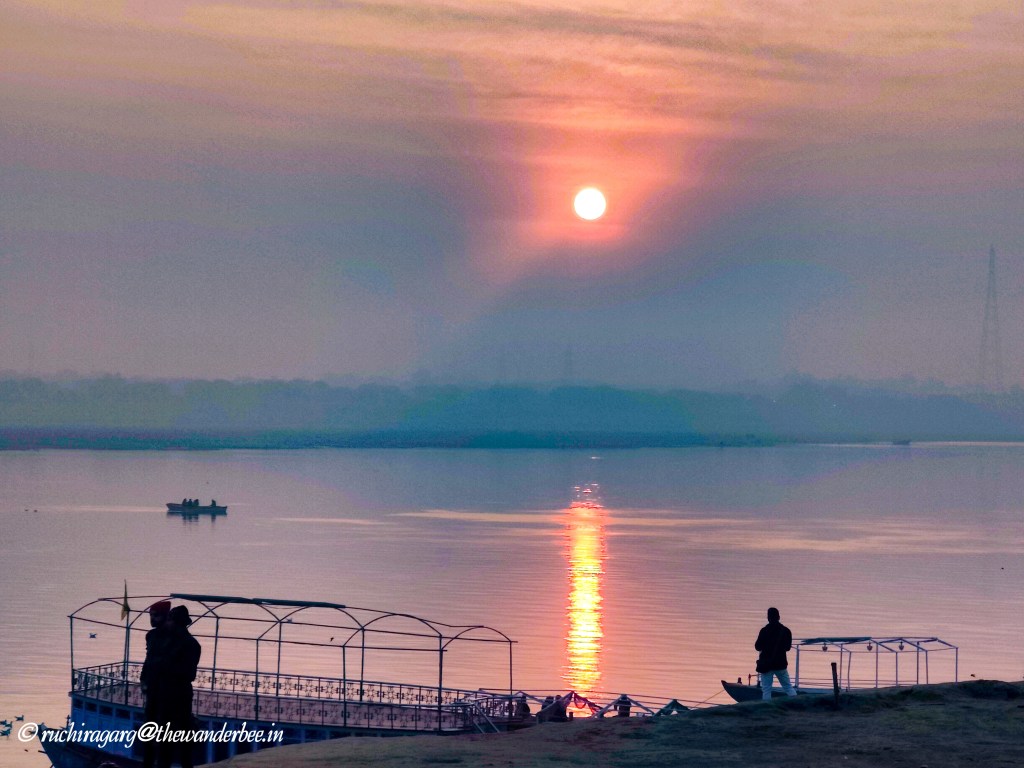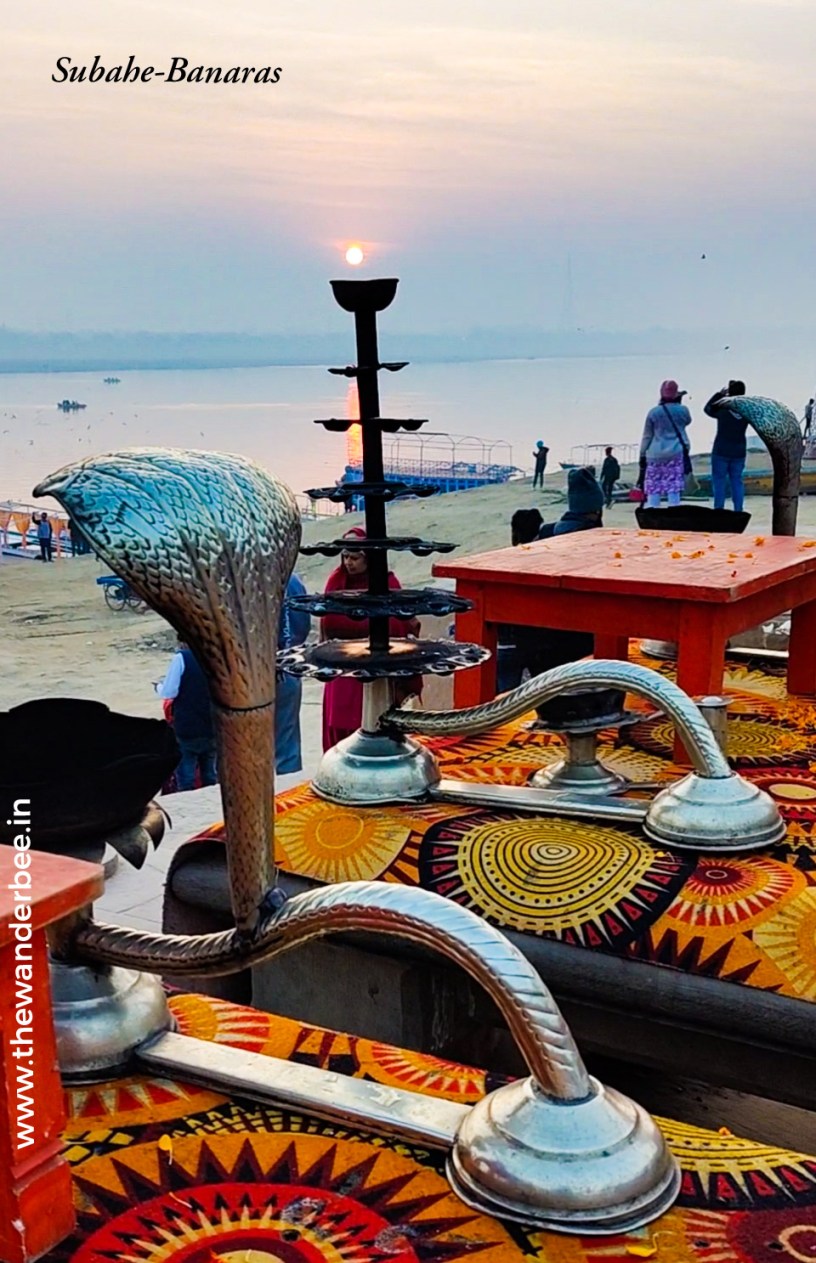It charms people across the globe and is the ultimate place to attain the transcended state. Being the oldest and holiest city of India, it draws more tourists every day than Goa, the holiday capital of the country. I was born and grew up there, it is my hometown which I left many years ago and I never thought Banaras (also known as Varanasi and Kashi) would make its way to my travel blog. Yet, when I got to experience it again after two decades, there was a renewed fascination with it.
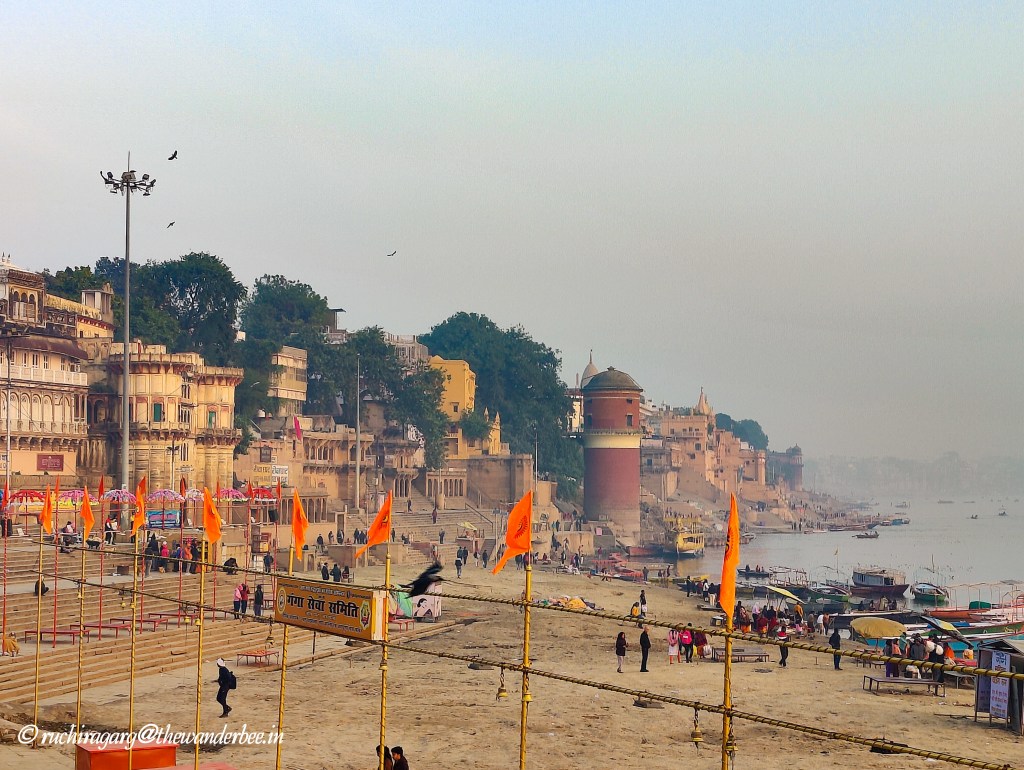
Where should you stay?
If you prefer luxury hotels, then you can stay at any of the new hotels in the Cantonment area of Varanasi. There are chains like the Taj, Radisson and Clarks amongst other newer hotels. Hotel Comfort Inn is a very decent mid-range budget hotel. However, this area is further away from the city center, and you would need to commute everywhere by cab. You would not find any street food in this area.
If you are looking to stay in the heart of the city and at walking distance/short commutable distance from the Ghats, temples, commercial markets, and the delightful street food then I would highly recommend hotel Shree Ganesha Palace which is a heritage property right in the city center. You can read my detailed review here. Staying in the city center is the best way to experience the real aura of Banaras.
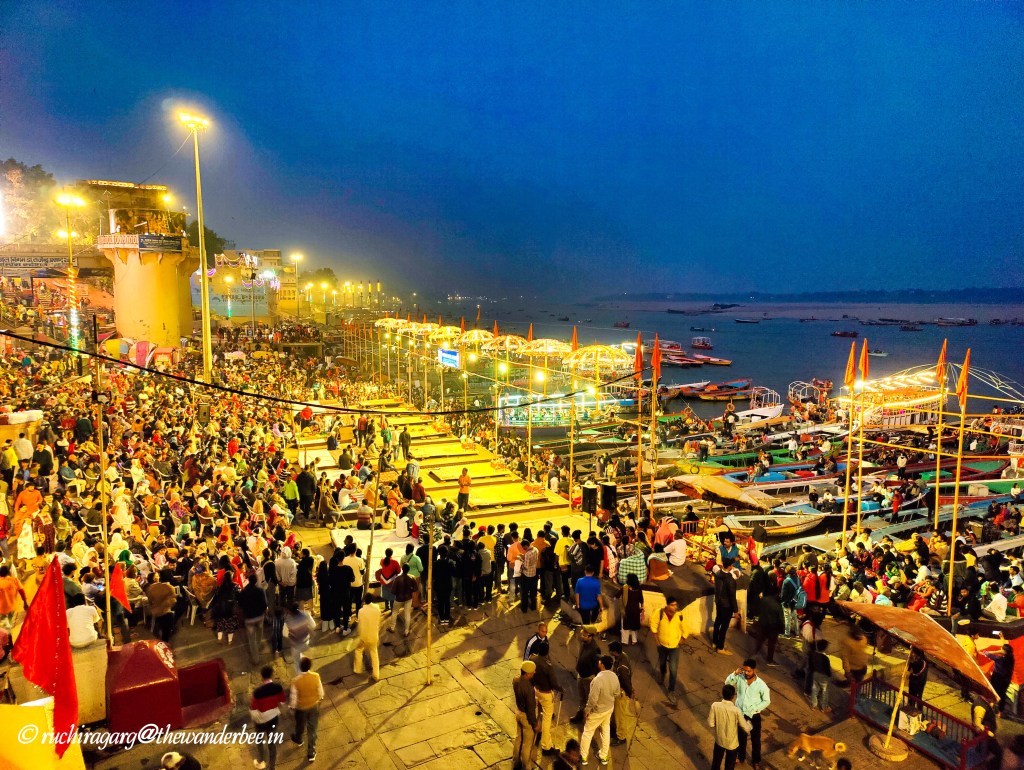
What is the best way to commute?
From the airport or railway station you can reach anywhere in the city by cab. The tuktuks or Toto’s as they are called there are prevalent in this city and can take you to almost every place of interest within 5 kms. Do carry cash though as they still don’t take UPI payments. The cabs are not easily available in the crowded city center for pick up as they do not have any place to wait. You can find a cab to drop you there easily though. If you are going away from the city center, then app based cabs (Ola and Uber) are easily available. The old-fashioned rickshaws also ply near the city center but given the traffic and the crowd, use them at your own risk.
What to see?
Kashi Vishwanath Temple – Recognized widely as a paramount place of worship in Hinduism, it houses the revered Jyotirlinga of Shiva, known as Vishveshvara or Vishvanath. The Vishveshvara Jyotirlinga holds a distinctive and profound significance in the spiritual history of India.

Throughout the years, eminent saints such as Adi Sankaracharya, Ramakrishna Paramhansa, Swami Vivekananda, Goswami Tulsidas, Swami Dayananda Saraswati, Sathya Sai Baba, and Gurunanak have graced this sacred site with their presence. A pilgrimage to the temple, coupled with a ritual bath in the holy Ganges, is believed to pave the way towards Moksha (liberation). Consequently, Hindus from around the globe aspire to visit this revered site at least once in their lifetime.
The temple has faced multiple demolitions, the most recent being by Mughal Emperor Aurangzeb, who replaced it with the Gyanvapi Mosque. The present structure, situated on an adjacent site, was erected by the Maratha ruler Ahilyabai Holkar of Indore in 1780. The mosque is still stands next to the temple and it is a mark of secularity to see two very different religious structures of such utmost importance co-located.

With the recent restoration efforts led by the BJP government, the temple now boasts a spacious 20-foot-wide corridor connecting Mandir Chowk to Lalita Ghat on the holy Ganga, providing unobstructed views of the temple. Previously nestled in the narrow lanes of Varanasi, the temple’s accessibility has been significantly improved, offering a dedicated area with a large courtyard. Online ticket bookings for darshan are available, allowing visitors to bypass long queues. Tickets can also be purchased at the on-site counters. While access to the temple is generally free, there are facilities like wheelchairs, free lockers for belongings, and a shoe stand. Photography within the temple premises is prohibited. Once you have completed the darshan, you can collect your stuff from the locker and explore the surrounding or walk to Lalita Ghat. There is a food court and washrooms also inside. The temple also has a dedicated guest house that can be booked in advance.
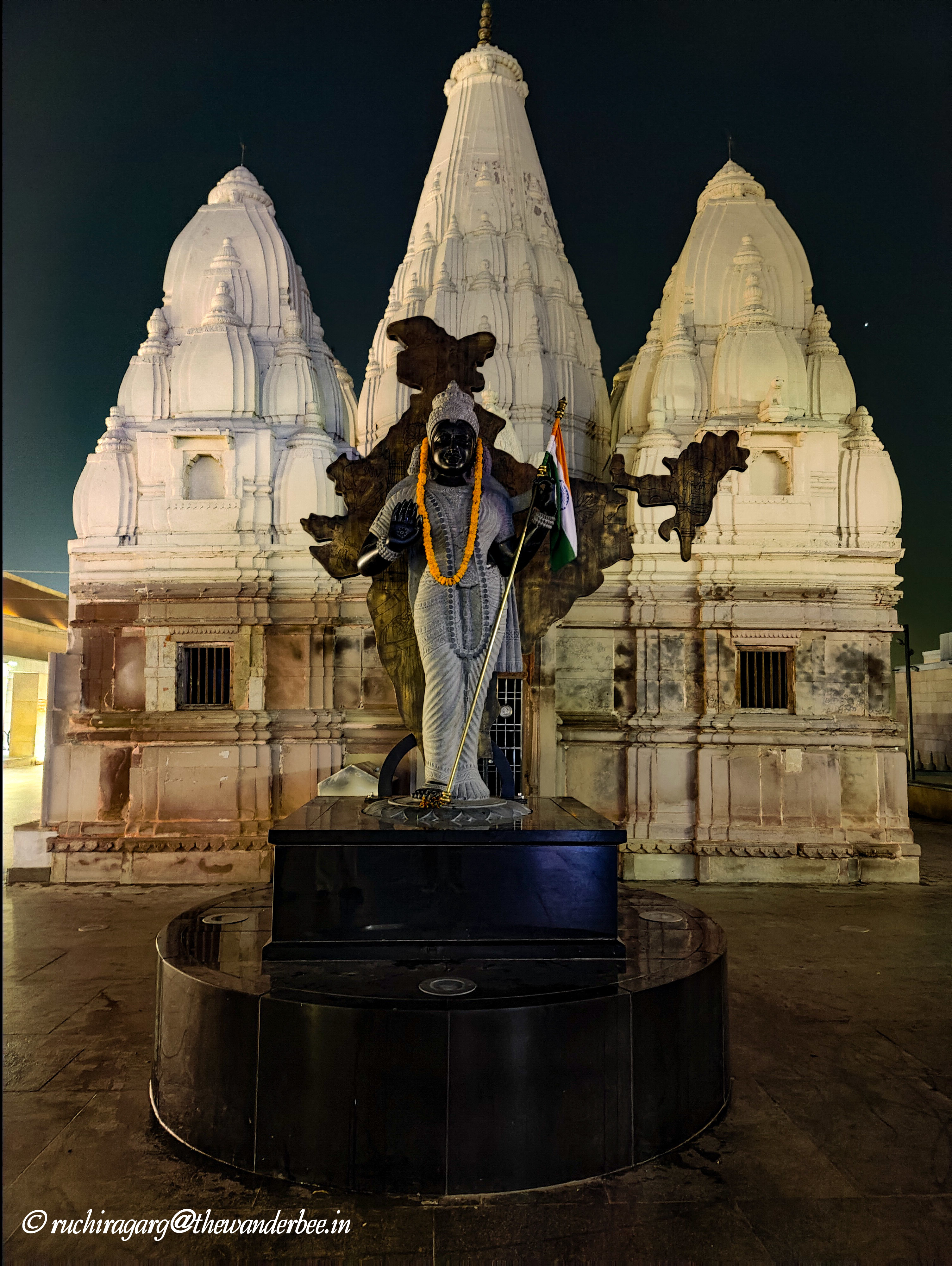

The optimal time for a visit is early morning, as vehicular access is restricted after 8 a.m., and the temple tends to get crowded. Those who opt for online tickets for special darshan are entitled to complimentary prasad with each ticket. Do remember to collect the prasad from the ticket counter after the darshan.
Kaal Bhairav Temple – This temple is one of the ancient temples mentioned in Kashikhand. The mythological belief of this temple is that Baba Vishwanath had appointed Kaal Bhairav ji as the Governor of Kashi. Kaal Bhairav ji has the right to punish the people of Kashi. Popularly known as Kotwal sahab, it is customary to take his blessings and permission when you come to Varanasi to live there or decide to move out of the city. When you go inside the temple, numerous vendors are sitting with black threads and will do some rituals and tie it on your wrist. The black thread is symbolic of Kaal Bhairav. There is no specific price for this, you can pay them whatever you deem appropriate anything from INR 20-50 is reasonable. This temple is inside a lane and it is better to go there on a rickshaw or toto or just walking.
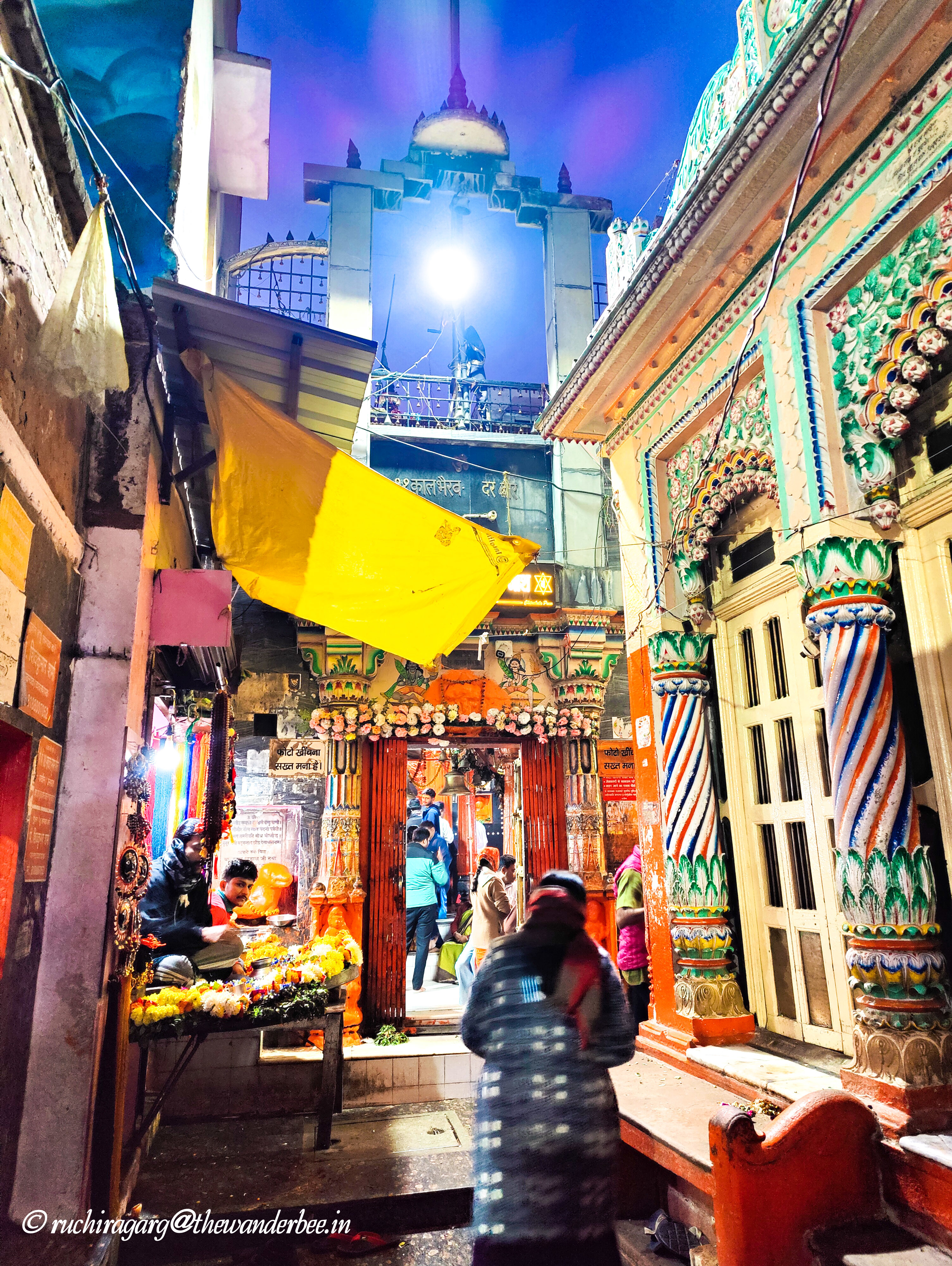

Sankat Mochan Temple: It is believed that this temple stands at the very spot where the great poet Tulsidas first dreamt of Hanuman. Poet Tulsidas, the author of Ramcharitmanas, founded the Sankat Mochan Temple, which means the remover of troubles or sorrows. Shri Madan Mohan Malviya, the founder of Banaras Hindu University, built this temple in 1900 AD. Devotees offer gram flour laddus made with pure ghee as Prasad to Lord Hanuman, and a garland of marigold and basil adorns his neck.An intriguing aspect of the temple is the positioning of Lord Hanuman’s idol, gazing towards Lord Ram. In the direction of Shri Ram Chandra Ji, there is the idol of Sankat Mochan Maharaj, symbolizing selfless devotion.
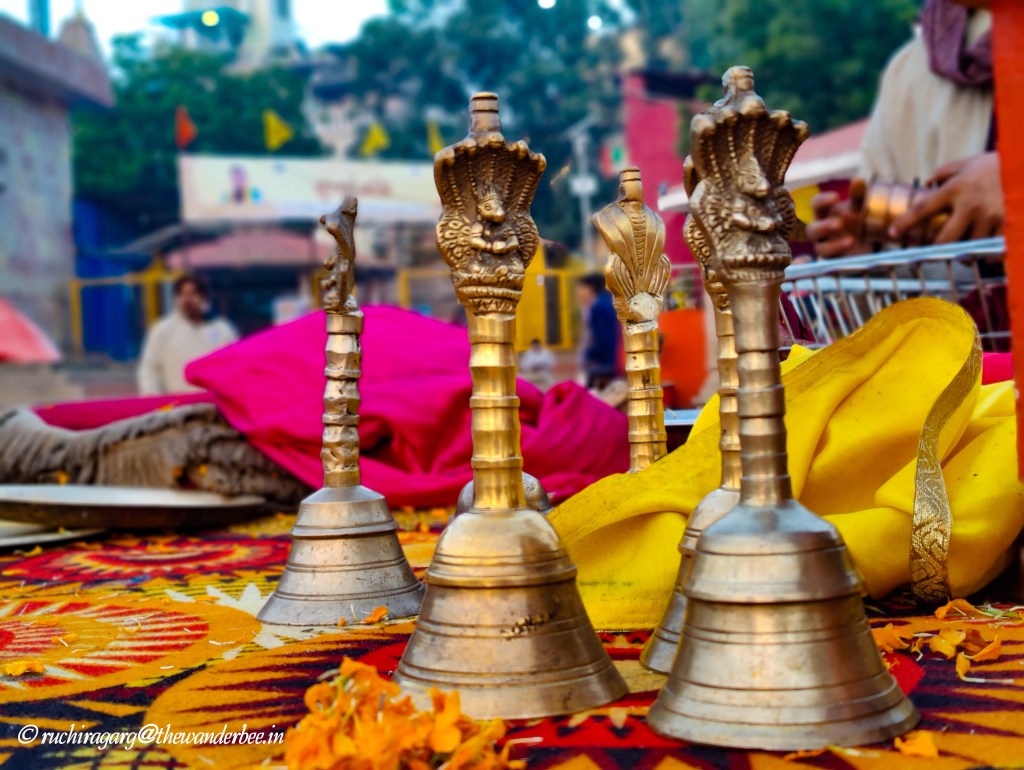
Cameras, phones, and smartwatches are not allowed inside the temple; they must be deposited in lockers outside. Authentic gram flour laddus are available for purchase inside the temple for offering as prasad. Historically, the temple has attracted monkeys, considered representatives of Lord Hanuman. Devotees often find it auspicious to feed them the prasad, but caution is advised as the monkeys may attempt to snatch the laddus. There is limited car parking outside the temple. The orange vermilion that is the symbolic teeka of Sankat Mochan is available outside the temple. When you step out, do smear it on your forehead to carry the blessings of Sankat Mochan.
Vishwanath temple BHU – The Vishwanath Temple in BHU is situated within the premises of Banaras Hindu University. Legend has it that due to numerous invasions on the Kashi Vishwanath Temple throughout the centuries, Pandit Madan Mohan Malaviya, in the 1930s, conceived the idea of recreating the Shri Kashi Vishwanath Mandir within the Benaras Hindu University campus. The Birla family took charge of the construction, commencing with the laying of the foundation in March 1931. The temple, named Shri Vishwanath Mandir, reached completion in 1966. As a result, the temple and its surroundings have become a significant attraction for Hindu students and visitors exploring Varanasi. Notably, the Shri Vishwanath Mandir boasts the tallest temple tower globally, with the Shikhara soaring to a height of approximately 250 feet.

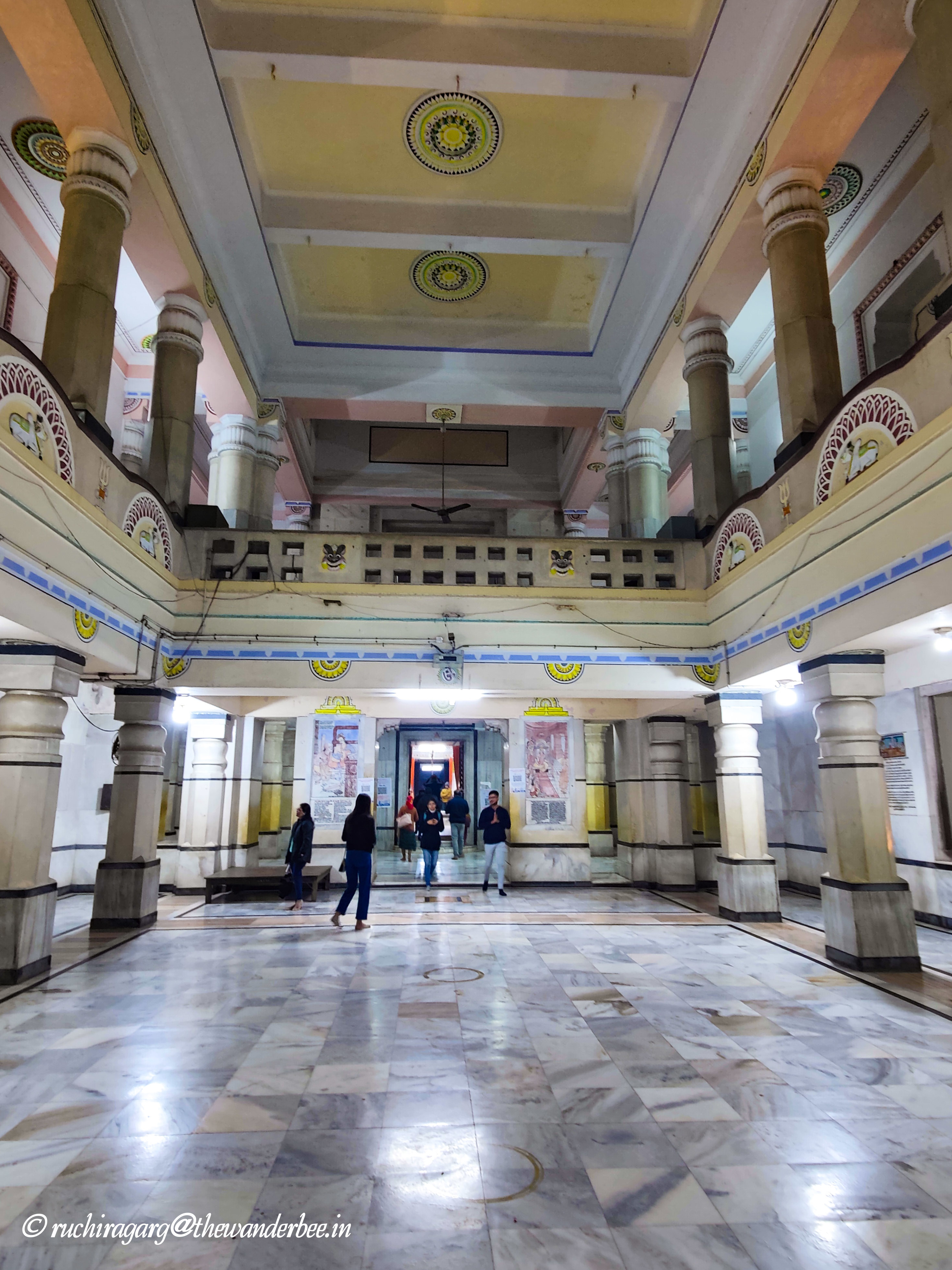
The temple is surrounded by plush gardens as is a key place for students of BHU to hang around. There are no restrictions in this temple. Do take a round of the Banaras Hindu University which is one of the oldest universities of India. The sprawling campus is open to public. The cool ambience provided by the lush green trees on both sides of the roads, the well maintained roads, the ubiquitous beige and brown color of the buildings, the gardens around the faculties make it a wonderful place to visit.
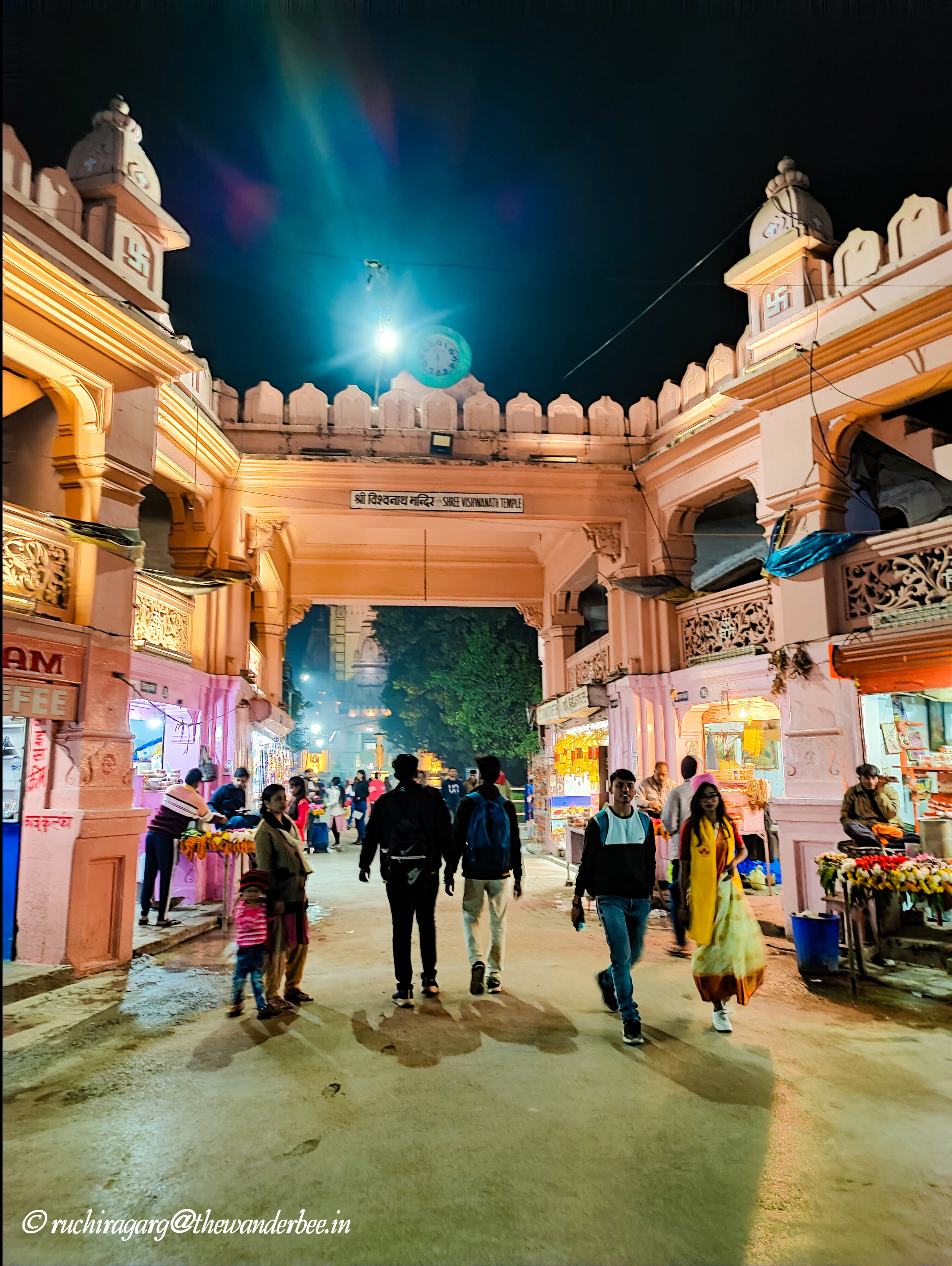
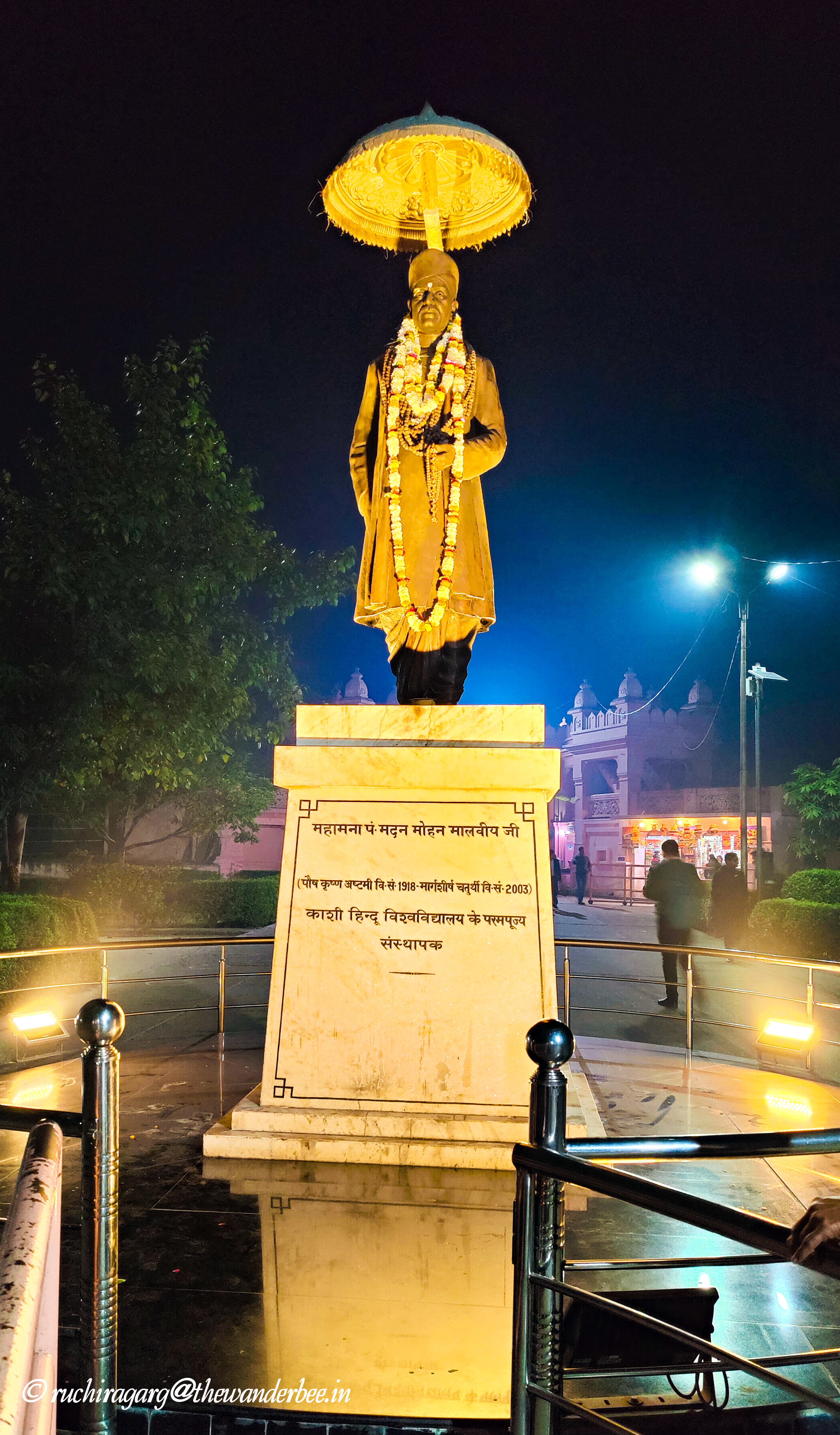
If you have more time I would recommend visiting the Bharat Mata Mandir near Kashi Vidyapeeth in Varanasi. It is the only temple dedicated the country as a goddess.
Sarnath – Around 528 BCE, at the age of 35, Gautam Buddha delivered his inaugural sermon in Sarnath after attaining enlightenment at Bodh Gaya. This historic site is significant as it marks the inception of the Buddhist sangha, formed by the enlightenment of the first five disciples. Referencing the Mahaparinibbana Sutta, the Buddha identified Sarnath as one of the four pilgrimage sites that his devoted followers should visit and regard with deep reverence. Exploring this location is highly recommended for its abundant Buddhist heritage.
Ganga Aarti at Dashashwamedha Ghat: The evening Aarti at the Dashashwamedha ghat is a sight worth seeing. A ritual to worship Ganga river which has the stature of a goddess, this aarti happens every evening from 6 to 7 pm. Young priests perform this aarti on the two sides of the Dashashwamedha ghat, on one side there are 5 priests and on the other side there are 7 priests. The steps are the same and witnessing both sides is a divine experience.

There are multiple phases of the aarti performed with different things in a stepwise manner to denote the 5 elements of nature. The smoke from incense at the beginning of the aarti represents purifying the state of mind.
1. The Lamps denotes the element of Fire
2. The flowers denote Earth
3. The water and handkerchief denote the element of Water
4. The peacock fan denotes the element of Air
5. The yak tail fan denotes the element of Space
There are multiple ways to see this aarti. One can do a boat tour of the ghats which is the costliest option, but the boats are parked on the ghat to witness the aarti. The second option is to pick up one of the reserved spots with chairs. Price varies for the same from INR 100-300 per person. The third option is to walk up to the ghat and find a free seat. I would recommend trying to go early and occupying the ghat stairs for a great view or alternatively picking up a reserved spot or what look like balcony seats to have a view of the aarti on both sides. The priests turn 360 degrees so you get a view of the aarti on all sides and don’t need to hang in on the crowded boats. The walk to the ghat is through the highly crowded streets of Godowlia. Be careful of the crowds as there are people, cows, dogs, bikes and rickshaws all making their way through the same place.

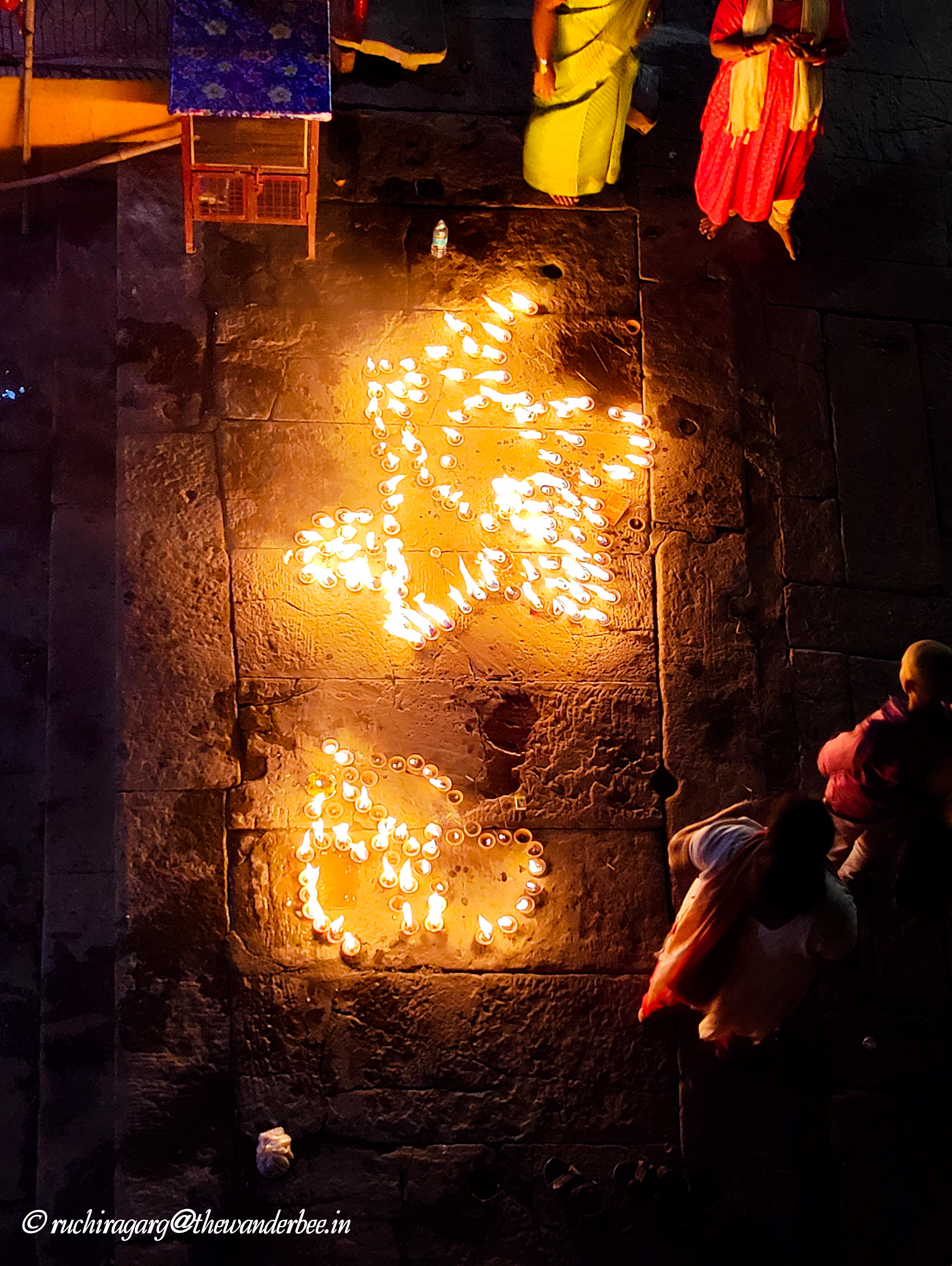
Subahe Banaras at Assi Ghat – Subahe-Banaras, the magical sunrise witnessed from the ghats of Varanasi has become even more mesmerizing with the Ganga aarti at dawn followed by the musical program with the best artists across the country. The aarti begins at 5 a.m in summers and 5:30 a.m in winters. There are plastic chairs for sitting or one could sit on the ghat stairs as well. The seats right in front are paid seats otherwise all other seating is free. The arti lasts for 30-40 minutes and is followed by a musical program. One can do a boat ride and witness all the ghats across the shores of Ganga after the aarti.
If you choose to remain at Assi Ghat where the aarti is conducted, relish a freshly brewed cup of tea as the sun rises and the entire area is fragrant with the incense used during the aarti. I would highly recommend spending some time sitting at the ghat and soaking in the morning sights and sounds that feel quite uplifting for the soul.
Boatride across Ghats of Varanasi – There are about 108 ghats lining the Ganges that give Banaras its distinct identity. Visiting each of them individually is not possible but do try to take a boat ride to get a view of the main ghats. The boat ride costs around INR 2500 for a boat that can accommodate 4-6 people. There are also larger boats or Bajdas that can accommodate 50-60 people.
Banaras is replete with temples with great legends. Being the oldest city of India there is a lot of history and one can experience the rich heritage of the country here. There is so much to see in the city but if you are there for a few days, the list above is my recommendation to make the most of your trip.
What to eat in Banaras:
Banaras is not just a holy city, it’s a street food pilgrimage. The list is endless but sharing my favorites here:
Lakshmi Chai Wala in Chowk– If you do a morning darshan of the Kashi Vishwanath temple, start your day with a cup of tea and malai toast at Lakshmi Chai Wala. They are also known for their white butter toast.
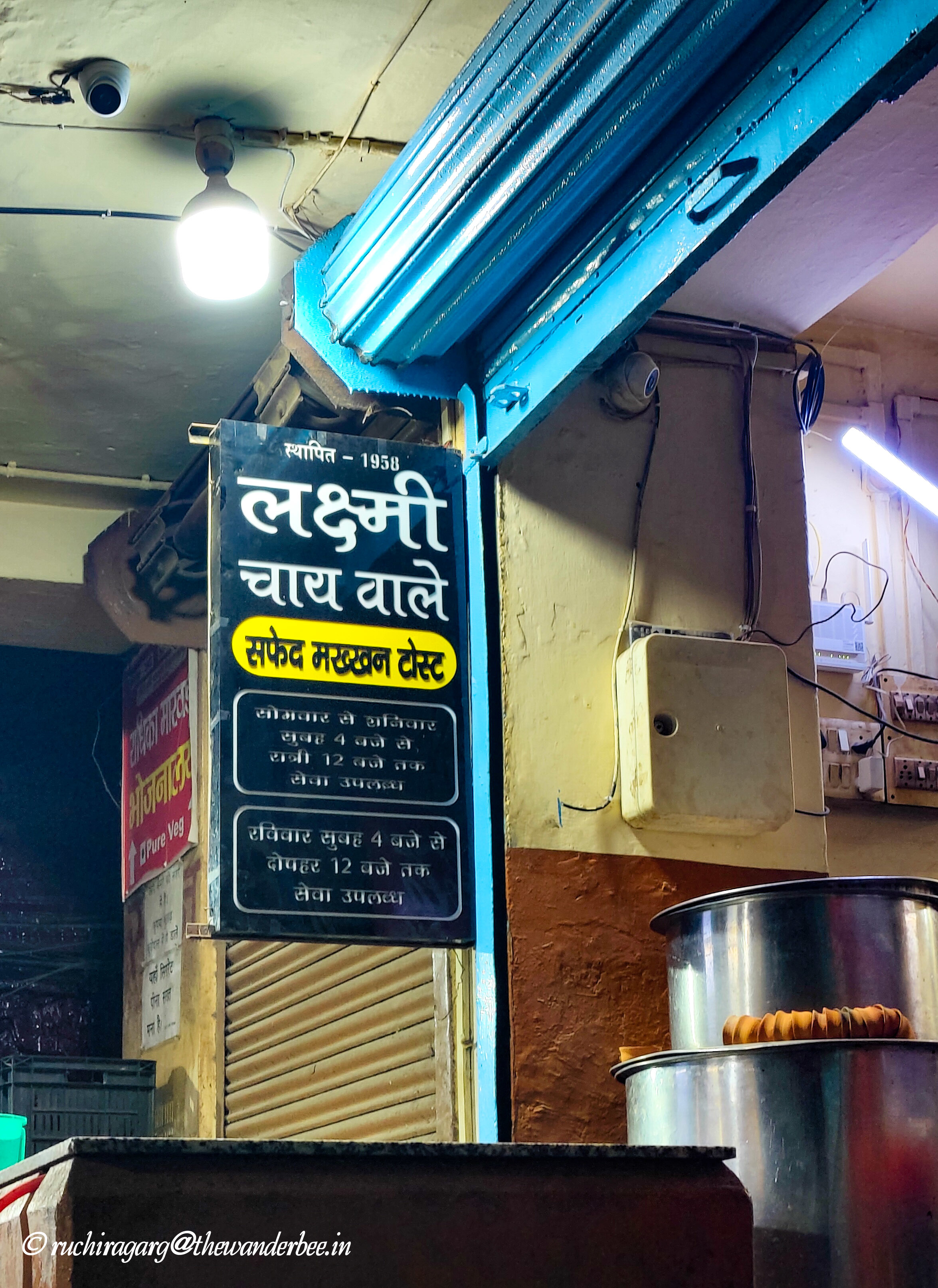
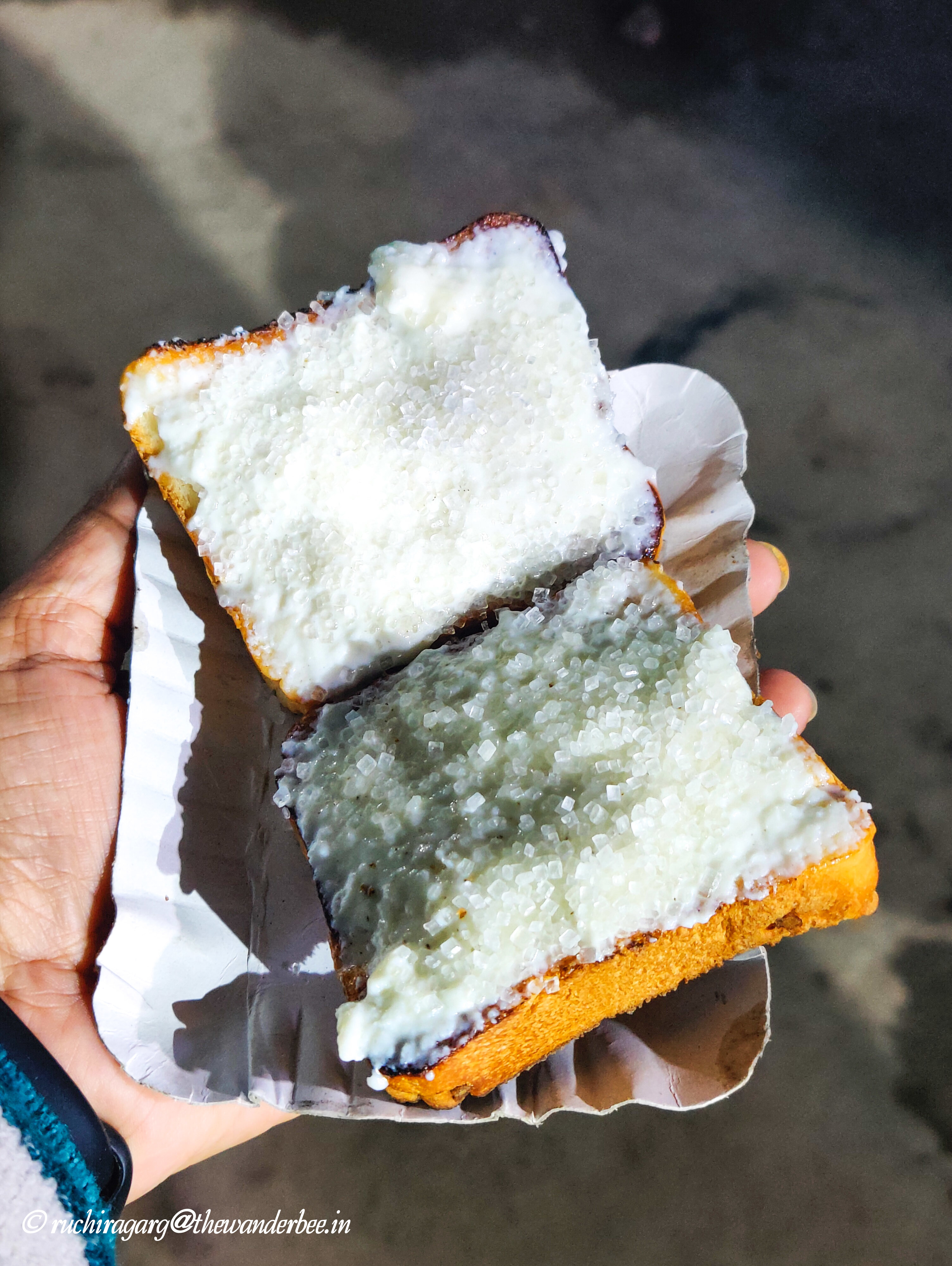
Breakfast of Kachori sabzi and Jalebi at Shree Vishwanath Mishthan Bhandar – Located in Bisweshwarganj, this is one of the most authentic kachori sabzi in Banaras. Made of Shuddh desi ghee, the kachori’s are soft and fluffy and just two can serve as an entire meal.


Chai and breakfast at Assi Ghat – If you go to see the Subahe- Banaras at Assi ghat, grab a cup of freshly brewed chai there followed up a kachori sabzi breakfast at one of the shops lining the ghat.
Chaat – The most unique chaat aspects of Banaras are the Tamatar Chaat and Chivda ( or Chooda) matar. Deena and Kashi Chat Bhandar are the most renowned in this space. If you stay at the Shree Ganesha Palace, both these outlets are at walking distance though they are flooded with people at all times.

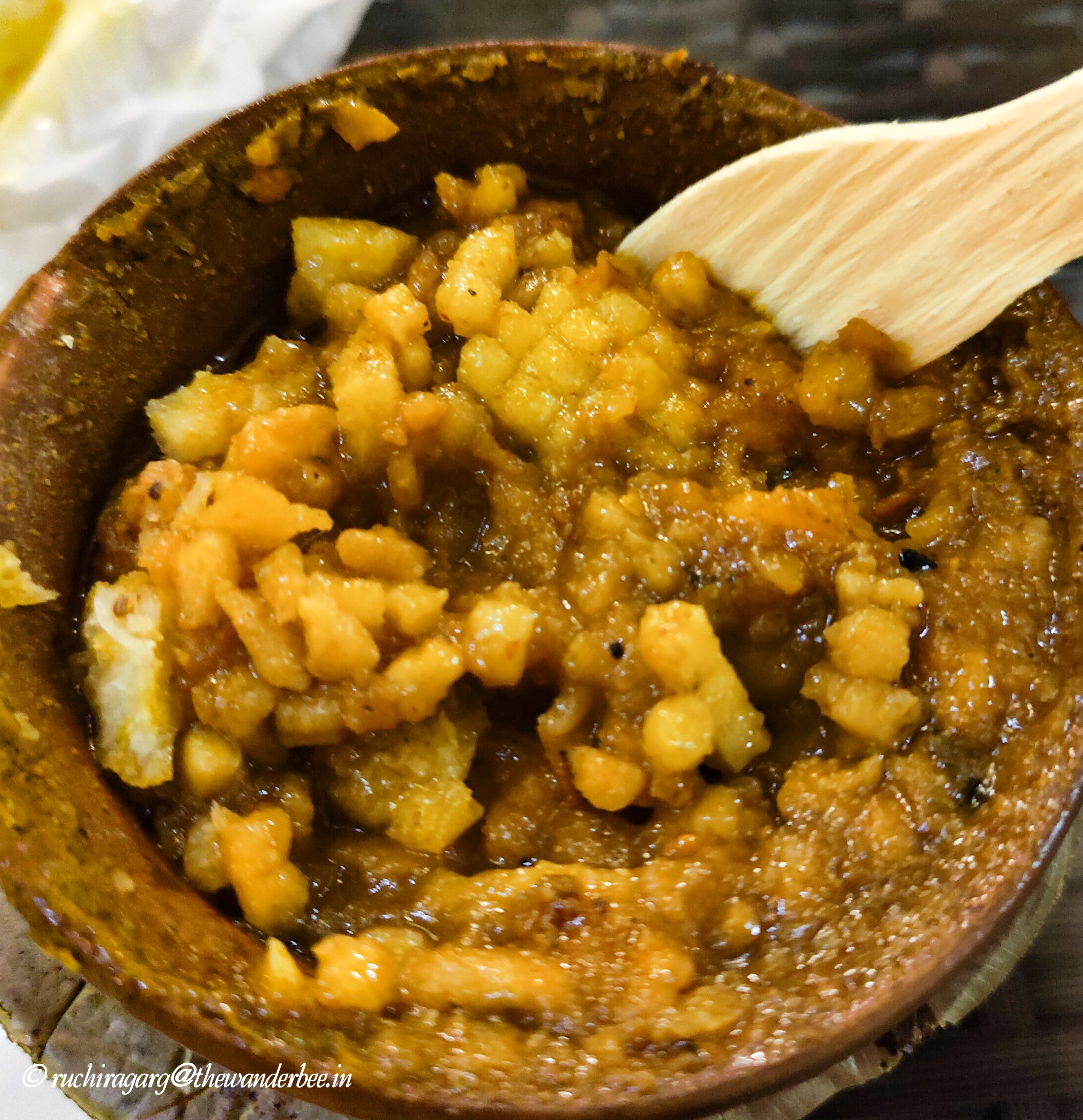
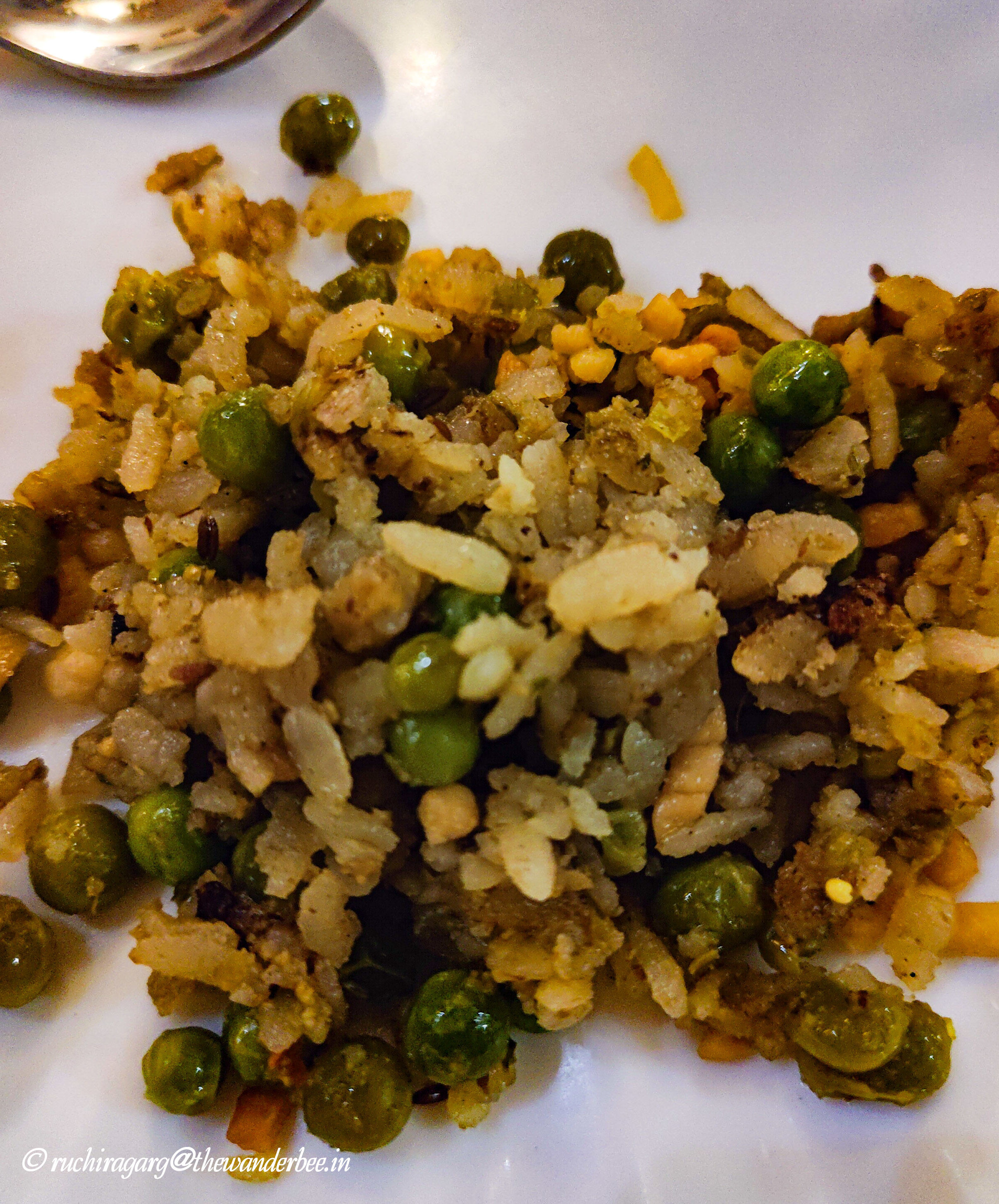
Garam Kulhar Wala kesar Badam Doodh- A winter special, this freshly churned milk flavored with almonds and saffron and offered in mud or clay cups is a complete delight. Have it in Chowk or at Ganga Juice Corner after attending the aarti at Dashashwamedha ghat.
Malaiyo – Another winter special, this dish is made of flavoured milk foam gathered while keeping milk at a low temperature. It is only available in the morning in winter months and is available at many places in Varanasi though the best one is available in Thateri Bazaar. By 11 a.m the foam starts melting hence the availability only in the early morning.

Pahalwan ki Lassi – Located at the beginning of Lanka, the two outlets of either side of the road named as Pahalwan Lassi Wale serve the most amazing lassi loaded with rabri and malai. The lassi is made of fresh curd as a kulhad ( cup) of lassi is a meal in itself.

Fresh Malai- While rabri is a common dessert across India, in Banaras, one would get fresh malai in a kulhad. It is a speciality as the halwai carefully takes out each layer of malai and tops it up with a dollop of rabri instead of sugar to not dilute the taste of the malai. You will again get it in many places in the Chowk, Thateri Bazar, Raja Darwaja areas amongst others in Banaras.
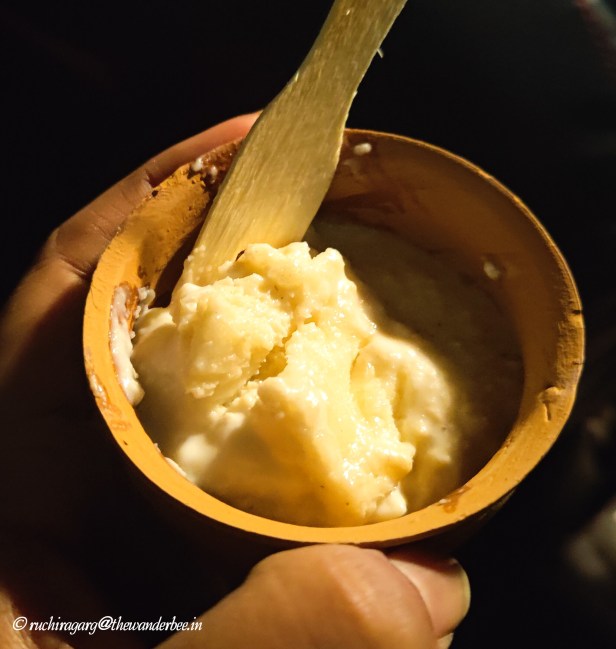
Laung Lata – This dessert is a speciality of UP and Bihar though the balushahi and other sweet samosa are trying to come close in taste. The outer layer is made using all-purpose flour and it is filled with a mix of milk mava and nuts. The outer layer is sealed using lavang (clove) which gives an exotic aroma to it. When served warm it tastes awesome. The richness of mava, nuts, and ghee gives a delicious taste. The ksheera in which it is dipped gives it the real flavor. You can have it any sweet shop including Pahalwan Lassi Wale. Beware, the size is pretty big and one piece is more than enough for one person.
Ram Bhandar ka Laal Peda – An age old delicacy that will give any chocolate fudge a run for its money, the laal peda from Ram Bhandar continues to be unparalleled. It can be stored for several days and only gets better in taste. A must carry home if you are visiting Banaras.
Banarasi Paan – Last but not the least, the meal cannot be complete without the banarasi paan. Made of light colored magai betel leaves, the paan is juicy and not doused with unnecessary ingredients to sweeten it. The primary taste is in the leaf. While you get it all over Banaras, if you are having chaat at Kashi Chaat Bhandar then Gama Paan Bhandar is right next door.
Do not expect fanfare, comfortable seating, clean ambience etc as true to its name, this is all street food so you have to be prepared to stand and have it on the street. My list can go on and on. There are many other nuanced delicacies like the Bhopa Chooda, Aloo ka papad and the multipurpose Bhukni that you only get in Banaras. Do make your visit to the city a food tour as well. But beware, it’s not for the faint hearted and gastro conscious. It takes real courage to do this food pilgrimage and experience the ultimate moksha and delight!!
What to Buy in Banaras:
If your luggage is already not loaded with the food items that are a speciality of the city, do check out the Banarasi sarees and other silk material that is typical of the city and available at very reasonable prices. For Banarasi Sarees you can go to Chowk, Madanpura, Pilikothi that have numerous shops selling Banarasi sarees. Some of the renowned ones are Jagdish Das and Sons, Shah Narayan Das, Haji Abdul Mateen. If you are looking at more reasonable regular wear silk, chiffon, tussar or crepe sarees, check out Shree Niketan at Bhelupur.
If you are a first-time visitor, you could also carry a shiv ling as a souvenir or the city of Baba Vishwanath. There are several stores in Godowlia selling the same.

As you spend time in Banaras, it will grow on to you. Crowded as it might be, with cars honking and people jostling their way around, there is no aggression. The broadest of cars may get through the narrowest of lanes with everyone clinging to the walls to give way. The hospitality and affection with which each shop owner will feed you food makes you feel like their personal guest. It’s known for its quintessential sarcasm yet everyone is willing to adjust a bit. Elderly are given special care as the city is known as the antim niwas, the place for eventual moksha. Go to Banaras not to experience the city but to discover yourself. For those of us who belong there, it’s not just a city, it’s an attitude, it runs in our DNA. After all you can take the Banarasi out of Banaras but you cannot take Banaras out of the Banarasi.
